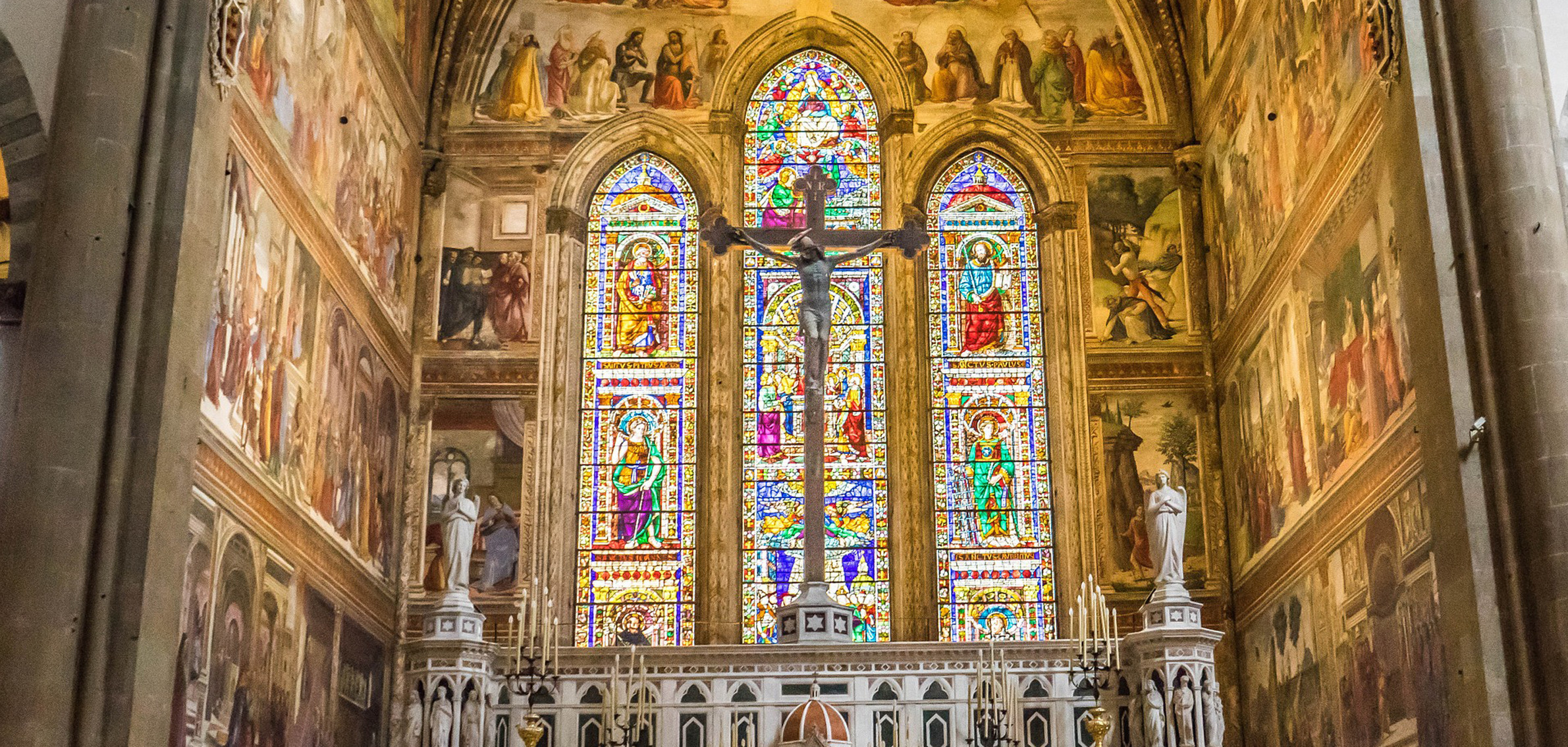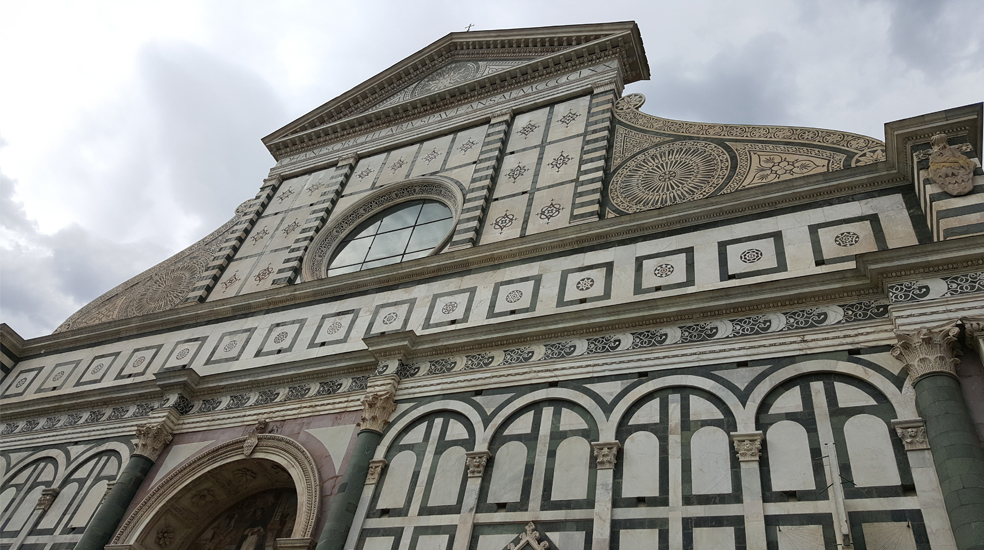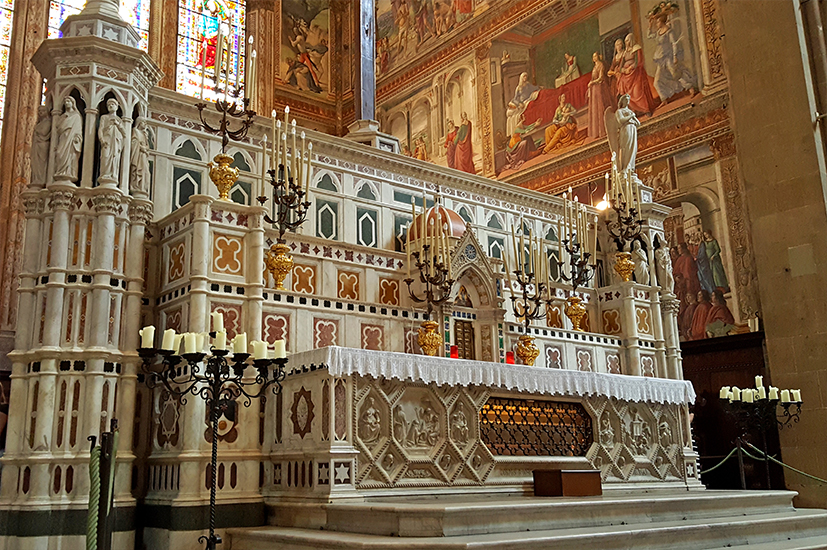
Santa Maria Novella unveiled
The Santa Maria Novella Church is one of the most beautiful churches
in Florence as well as one of the most important examples of Gothic
architecture in Tuscany, and yet, it is too often neglected by tourists,
drawn to more famous places of interest.
Do not make this mistake. You will be missing out on so much.
For starters, the facade is the oldest of all the churches in Florence.
The lower part, in Romanesque-Gothic style, was executed by a Dominican
architect, Fra Jacopo Talenti da Nipozzano, while the upper part was
completed 100 years later in 1470 by Leon Battista Alberti.
The characteristic S-curved volutes Alberti designed for the facade were
an absolute innovation and from that moment on, all the churches with a
sloping roof will use those same volutes.

The convent was acquired in 1221 by Dominican friars, near a
pre-existent church dedicated to Santa Maria della Vergine, located just
outside Florence's medieval walls. The work for the new church
(Novella) begun in 1279.
A gorgeous example of harmonic proportions on the outside, the Santa
Maria Novella Church is just as magnificent on the inside, with its
large central nave sided by two aisles and its beautiful cloisters.
The basilica holds artworks of exceptional value as well. On the far
wall, as you enter the church from the side door, you will see
Masaccio’s Trinità, one of the earliest paintings to show a masterly use
of perspective and depicting the Virgin Mary as a grown woman, not a
young a girl.
The pulpit, commissioned by the Rucellai family in 1443 and designed by
Filippo Brunelleschi, is the very same from which came the first attack
on Galileo Galilei, while hanging on the central nave you’ll find
Giotto’s Crucifix, an early work of the master.
As you reach the altar it gets hard not to remain impressed by the
beauty of the fresco cycles in the Tornabuoni and Strozzi Chapels,
respectively by Domenico Girlandaio and Filippino Lippi, not to mention
the spectacular stained glass windows of the apse.

If you manage to look away from the frescoes you can go to admire the
so-called Chiostro Verde (Green Cloister), which takes its name from
frescoes originally painted in "green clay" such as the Flood and the
Sacrifice of Noah Paolo Uccello, and then see the Spanish Chapel
featuring other beautiful frescoes.
It does not end here, there would be so many things to say about the
Santa Maria Novella complex, but words won’t be enough to describe the
beauty of this place. You will have to see for yourselves!



